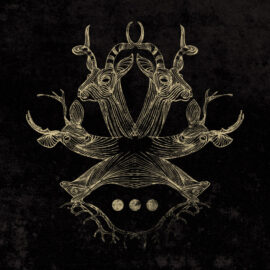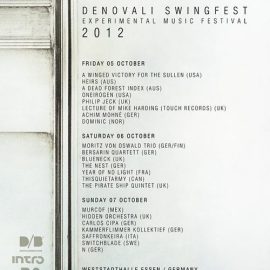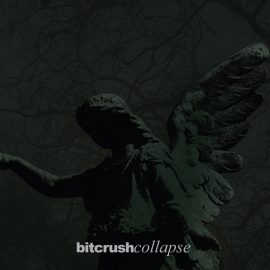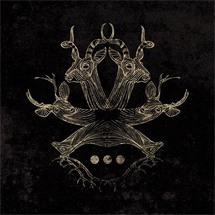Here’s a quick roundup of a few albums I haven’t had a chance to cover in the last year, yet they indeed remain on my rotations. Remember, don’t attempt to chase the very latest releases – you’ll find yourself tripping over an endless torrent of sound. For once, try to fall in love with the album, and play it over and over. You know… like in the good ol’ days 🙂
 Blueneck Epilogue Denovali Blueneck can do me no wrong. A single note among the picked up radio noises can do me no wrong. A chord, a strum, a snare, an opening before me, like a spreading valley seen for miles from a tallest mountain, can do me no wrong. Upon the land surrounded by water, green in pasture, blue in sky, my eyes no longer can confront; upon all sound splayed out before me, my ears no longer can pick up. And so I jump… Soaring through the endless waves of sound I land upon the group’s fourth album, titled Epilogue. And as I glide above its notes, my only hope that with a title like that it’s not their last. Indeed, the band’s lead, Duncan Atwood, talks about a ‘deliberately different approach’ on this incredibly melancholy and totally instrumental release. The album is intended to be a book-end to the three previously released vocal albums, and marks a transitional period in the band’s evolution, as well as a nod to cinematic works, creating a soundtrack to “an (as yet) imaginary film.” The sound of the album is distinctly Blueneck, and if you’ve heard Scars of the Midwest(2006), The Fallen Host (2009) and Repetitions (2011), you would expect at any point to hear Atwood’s falsetto voice. But the vocals never come. Instead the music brings on mild desperation, slow heartache, and finally content, with which the band has painted its canvas. The best part upon reading the press release is that my fears are relieved, as Blueneck is already working on the next full length album due to be released in 2013 on Denovali. Don’t miss this one – it is already on our Best of 2012 list : Music For Walking And Not Crying In The Autumn Rain
|
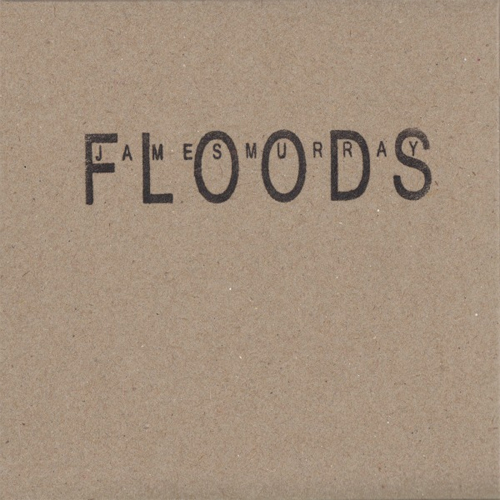 James Murray Floods Slowcraft Rising above the sonic layers of elegant ambiance, the instruments strum off the delicate rhythm. Falling below the veil of white noise of water, the notes land like droplets on drowning vibraphone. This music unfurls in the organic garden of frequencies, where water is the main source of vitality and life. Dedicated to, and based around the principal molecule, the seven track release from James Murray pays tribute to the twin rivers near Welsh mountains, where Murray grew up. Reminding me a lot of the theme explored within Flaming Pines‘ Rivers Home series, the music celebrates the destructive and regenerative power of the waters. Developing on the concepts of isolation due to river floods, the album is also “an attempt by the artist to reconcile with his personal floods, those mental waters that rise to submerge the will, that can at times be opposed and must at others be allowed to overwhelm”. If James Murray’s name sounds familiar to you, that’s because his debut, Where Edges Meet, appeared on Ultimae Records back in 2008. He subsequently landed a track on Fluid Audio‘s Hope collection, dedicated to interpreting the definition and embodiment of “hope”. Most recently, the title track of this album, “Floods”, appeared on Future Sequence‘s SEQUENCE3 digital compilation, which is available for download for free. Floods marks the sophomore album for this London based producer, and is released on his very own Slowcraft Records. Each copy of the album includes a signed insert dedicated to the buyer of the album. And you’ll want to own a copy of this limited release…
|
|
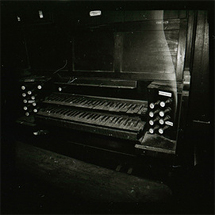 Richard Knox & Frédéric D. Oberland The Rustle of the Stars Gizeh One of the beautiful things about music is that it really lives outside of time. Sure, we all pursue the latest releases, but an album that has hit the streets a few years ago is still very young today. At least among the genres of ambient and modern classical music – music that ages on a different scale. Such is the case with a release by Richard Knox & Frederic D. Oberland, whose album, The Rustle of the Stars was initially released on an LP in November of 2011, and six months later on a CD, published on Knox’s own Gizeh Records (“it’s pronounced ‘gee-zuh’ by the way”). And if the record has somehow slipped me by, then there was a reason for which it patiently awaited its turn. Perhaps that moment is today, as I reach into the pile of shrink-wrapped promos, awaiting quietly their turn. Slow cello notes measure out the rhythm below radio static, field recordings, and cinematic vocal sighs by Angela Chan. Notes drift in the faded atmosphere, then slowly settle on the floor with dust. The strings rustle beneath vintage textures evoking moments of pure elegance, a little anguish and a lot of hope. Meeting on tour in Europe, the duo found synergy in their aesthetic and decided to record an album exploring the musical journey paralleling the North Pole explorer diaries. “50 km from the arctic circle, ‘The Rustle of the Stars’ is a phenomenon of austere beauty, a barely audible noise that occurs when the draught from human breath causes multiple collisions among the ice micro-crystals in the air.” I couldn’t agree more with that description. Be sure to pick up Knox’s work with other projects, Glissando and A-Sun Amissa as well as Oberland’s releases with Colin Johnco as Farewell Poetry.
|
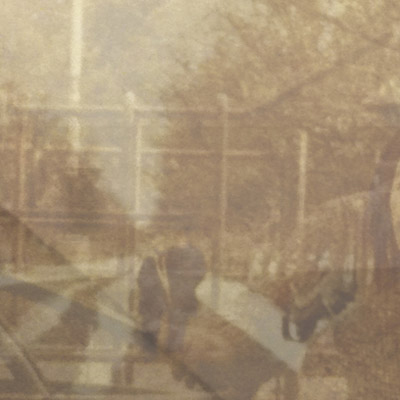 Ezekiel Honig Folding In On Itself Type It’s nice to see Ezekiel Honig on Type. His music is so gentle, so subdued, so fragile, it may crumble at any moment and fall into a mute abyss. The pulsating beat palpitates beneath the sheath of principal elements, transforming into something beyond ambient techno, something beyond microtonal rhythms, and something beyond descriptions with words. The titles of the tracks (and the album title itself) hint at imaginable places and unattainable spaces through reality alone: “Subverting The Memory Of Your Surroundings”, “A Closed Loop That Opens Everywhere”, and “Tradition Is The Illusion Of Permanence”. Folding In On Itself is without a doubt melancholic in nature, and it seems to soak in the passing of time, growth of wisdom, and realization of truth. “Memory and the corruption or distortion thereof is at the core the record, and like the cover which is made up of hazy family snaps of a changing Manhattan, Honig has tried to capture a sense of entropy in his quickly disintegrating city.” This mood is better conveyed with the following suggestion: take a moment to stop on a street that you’ve walked on a thousand times; now picture yourself walking here many years ago; don’t try to hold on to the past, but simply let it flow past your conscience, and let all of these feelings and music fold in on itself. On the record, the New York City native uses locally captured field recordings, acoustic instruments, and environmental textures to tell a personal story of change, loss, and ultimately life. Check out Honig’s previous albums, Technology Is Lonely (2003) and Surfaces Of A Broken Marching Band (2008), released on his very own Anticipate Recordings.
|
|
